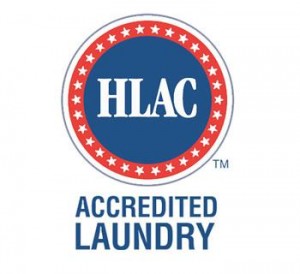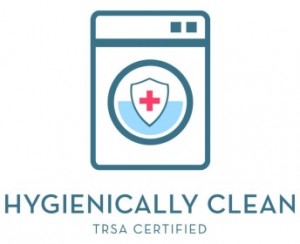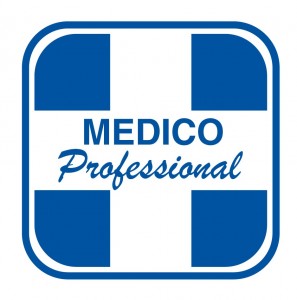Laundry plays a vital role in every healthcare facility’s integrated infection prevention and control program. Patients are literally surrounded and exposed to yards of healthcare textile fabrics. Recently several “white papers” have been written on the subject of laundry best practices to support infection prevention activities with the goal of improving patient outcomes. Each has a different perspective on the best methodology to achieve this important goal of providing hygienically clean textiles.
In this document, we will review these varying approaches from HLAC, Hygienically Clean and a national competitor, providing our perspective on the issues each raise.
View the Complete Medico Whitepaper:
 The key premise behind HLAC methodology for accreditation is to focus on the process. HLAC inspects a laundry’s processes to ensure that its processes meet a predetermined standard viewed as the best method of insuring that the product is clean and free from any danger to the patient.
The key premise behind HLAC methodology for accreditation is to focus on the process. HLAC inspects a laundry’s processes to ensure that its processes meet a predetermined standard viewed as the best method of insuring that the product is clean and free from any danger to the patient.
The process is extensive and includes a review and inspection of the following elements to only name a few:
- Textile specifications and selection, maintenance and inventory levels
- Laundry facility design, ventilation and chemical use &management
- Contingency planning, backup and protocols
- Equipment, preventative maintenance, housekeeping and operations
- Personnel qualifications, HR policies, hygiene safety and training
- Customer service policy, contact and issue procedure
- Quality control, assurance and monitoring
- Universal precautions, handling, storage
- Transportation and delivery / pick up procedures at customer
HLAC examines a Laundry’s process using a detailed checklist of standardized criteria supported by recognized state, federal and international agencies as well as industry standards. HLAC accreditation is an all-inclusive, on-site inspection of the facility, its processes and procedures and protocols. On-site inspectors observe the operations, inspect its policies and question both managers and production staff on the job for compliance. Production staff and Managers are interviewed and questioned as to what is done, how it is done and their role in keeping the laundry clean and safe. The day long inspection observes operations, equipment, building design, infrastructure systems and delivery methods.
While internationally there is some reliance on biological testing of healthcare textiles after laundering, there is no universally accepted definition of what is hygienically clean. Currently, there is no consensus from the CDC or EPA on a standard test method for textile hygiene. HLAC believes that testing is useful for quality assurance. HLAC’s process centric focus reduces the need to rely on sporadic end product sampling and testing.
HLAC believes that the highest level of assurance can only be provided with a correctly designed and managed laundry and linen program. A thorough review and inspection of the laundry textile process from pick up of soiled linen, processing of the linen and delivery of the clean product back to the customer provides the best assurance to the customer of a hygienically clean product.
 Hygienically Clean believes microbial measurement of clean laundry is the only true assurance that textiles pose no risk of infection. Hygienically Clean adds outcome measures to structural and process measures long mandated, regulated or suggested by public and private authorities.
Hygienically Clean believes microbial measurement of clean laundry is the only true assurance that textiles pose no risk of infection. Hygienically Clean adds outcome measures to structural and process measures long mandated, regulated or suggested by public and private authorities.
The Hygienically Clean designation assures the safety and cleanliness of textiles rather than certifying only laundry processes. Hygienically Clean is scientifically based. It sets an established threshold that guides the reduction of pathogens on textiles to levels that pose no threat of human illness, according to the Certification Association for Professional Textile Service Administration (CAPTSA). The microbial levels established by CAPTSA and the European Union (EU) for laundered textiles 30 years ago are 20 colony forming units (CFU) per square decimeter for healthcare textiles. This serves as the basis for Hygienically Clean certification.
Hygienically Clean does not certify a facility simply on the basis of following all proper policies and procedures to prevent contamination; it requires consecutive months of independent laboratory testing before certification and ongoing testing to maintain the designation.
U.S. healthcare authorities are recognizing the value of outcome measures as opposed to structural and process measures and this trend has extended to laundry.
Hygienically Clean is the only tool for launderers to implement the first recommendation for the healthcare industry in the Robert Wood Johnson Foundation / Urban Institute report:
- Decisively move from measuring processes to outcomes
Focusing on outcome measures, the report continues, sparks engagement in broader approaches to quality improvement activities “ideally relying on rapid learning through root cause analysis and teamwork”.
Hygienically Clean encompasses these concepts without ignoring the contribution of specific processes that are associated with achieving better outcomes. Hygienically Clean views every structure and process as an internal tactic, part of a comprehensive approach to achieving good outcomes rather than an end in itself. Hygienically Clean builds upon requirements such as documentation and inspection while adding quantifiable testing of outcomes.
This national competitor believes launderers must go beyond HLAC accreditation or the “nebulous” hygienically clean designation and introduce EPA registered sanitizers and bacteriostatic products into the laundry cycle to increase the infection prevention properties of the treated textiles. This use of newer products goes beyond hygienically clean to sanitize which means that a 99.9% reduction in bacteria has been achieved. This definition is set by the EPA and can be used universally throughout the industry. These products provide residual bacteriostatic activity against Gram Positive and Gran Negative bacteria. This means bacteria introduced to the textile will be isolated and its growth slowed. This will minimize the potential transmission of infectious diseases while the textiles are in use.
 Medico finds merit in all three methodologies. Each provides very salient points that we believe aid us in providing hygienically clean product to assist healthcare facilities in their infection control program. We have found it difficult to choose among the three approaches. While HLAC, Hygienically Clean and the national competitor all take an either / or approach, we have chosen to look at the issue from an and / also perspective.
Medico finds merit in all three methodologies. Each provides very salient points that we believe aid us in providing hygienically clean product to assist healthcare facilities in their infection control program. We have found it difficult to choose among the three approaches. While HLAC, Hygienically Clean and the national competitor all take an either / or approach, we have chosen to look at the issue from an and / also perspective.
For your assurance, Medico is HLAC Accredited and also Medico is Hygienically Clean certified and also Medico uses EPA registered sanitizers and bacteriostatic products in its wash process.
We believe following all three protocols rather than choosing one will lead to the best possible outcomes for our healthcare clients.


